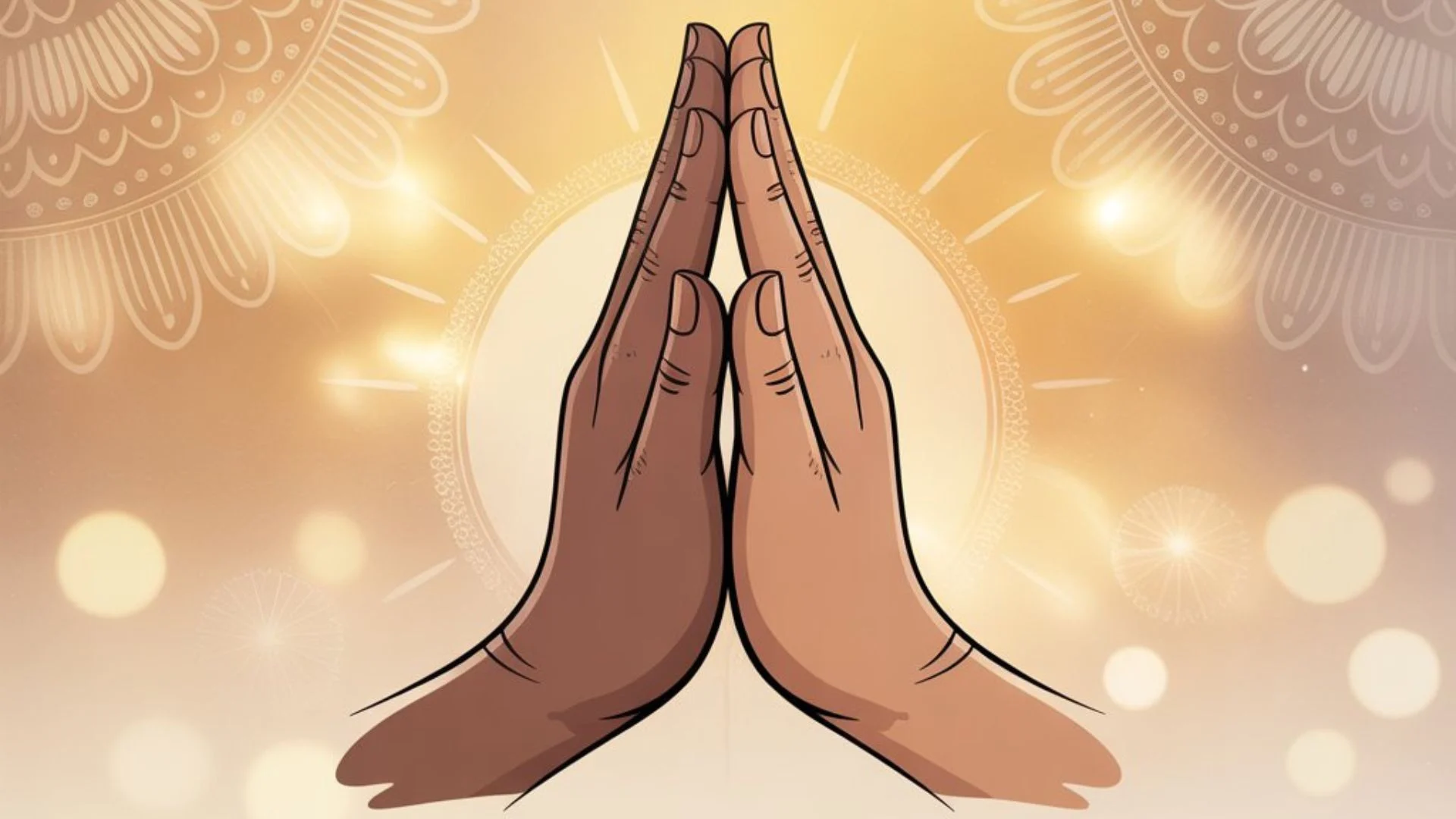Namaste is far more than a simple greeting.
It is a gesture that carries profound spiritual significance, a connection to the divine, and a practice rooted in thousands of years of Hinduism and Sanskrit tradition.
Whether in yoga classes, meditation, or daily interactions, this humble salutation transcends language and geography, conveying respect, reverence, and the acknowledgment of the sacred being within each person.
In this guide, we will explore the origins, spiritual importance, pronunciation, and practical benefits of Namaste, while connecting it to its broader cultural and philosophical contexts.
Introduction to Namaste
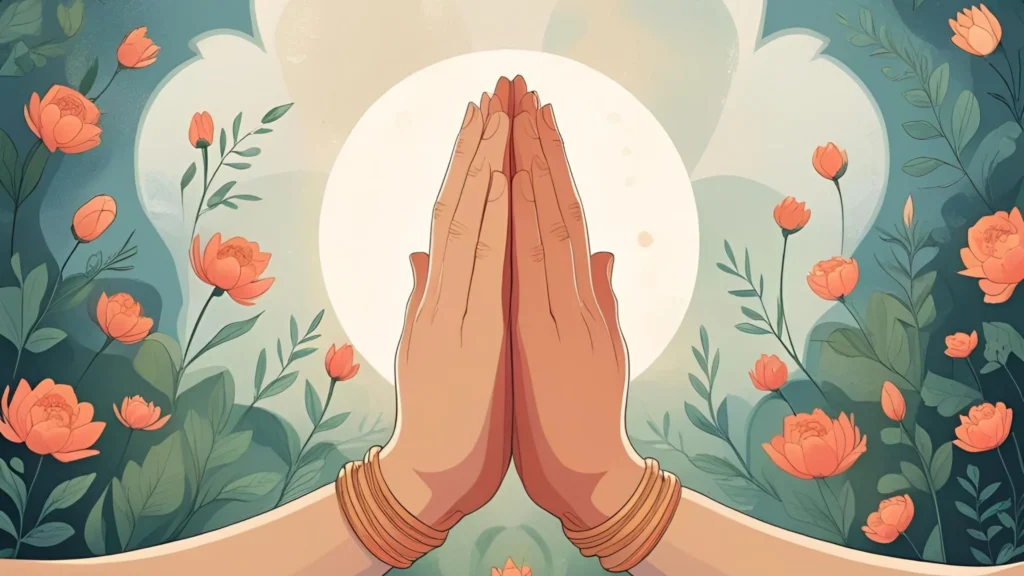
At its core, Namaste is a greeting that means “I bow to you.” It is commonly used in India, Nepal, Thailand, and many other parts of Asia.
Derived from Sanskrit, the word is a combination of “Na” meaning “not” and “Ma” meaning “mine,” symbolizing selflessness and humility.
In daily practice, Namaste is accompanied by a mudra (añjali mudrā)—hands pressed together at the heart with a slight bow—signifying respect and unity. The gesture is used in:
- Welcoming guests or elders
- Beginning or ending yoga sessions
- Spiritual rituals and prayer positions
- Expressing gratitude, peace, and positivity
Key Phrases Associated with Namaste
- “I bow to you”
- “I bow to the divine in you”
- “The light within me honors the light within you”
This greeting is not just a salutation, but a reflection of recognizing the divine essence in others, promoting togetherness and inner calm.
Historical and Cultural Roots of Namaste
The origins of Namaste date back thousands of years and are documented in ancient Vedic texts. For instance:
| Text | Reference | Significance |
| Rigveda | 8.75.10 | Earliest mention of bowing as a mark of respect |
| Atharvaveda | 6.13.2 | Describes greetings with hands folded and spiritual acknowledgment |
| Taittirya Samhita | Various verses | Ritualistic use of pranama in prayers and offerings |
The word “Namaskar” or “Namaskara” is often used interchangeably with Namaste. While Namaste is more common in casual contexts, Namaskar carries a slightly more formal or ceremonial tone.
The gesture of bowing and saying Namaste spread across cultures:
- India: Daily greetings, rituals, and yoga practice
- Thailand: Thai temples use similar gestures to show reverence to monks and deities
- Nepal & Bhutan: Religious ceremonies and cultural greetings
This evolution highlights the deep-rooted spiritual and cultural significance of the greeting.
Spiritual and Philosophical Significance
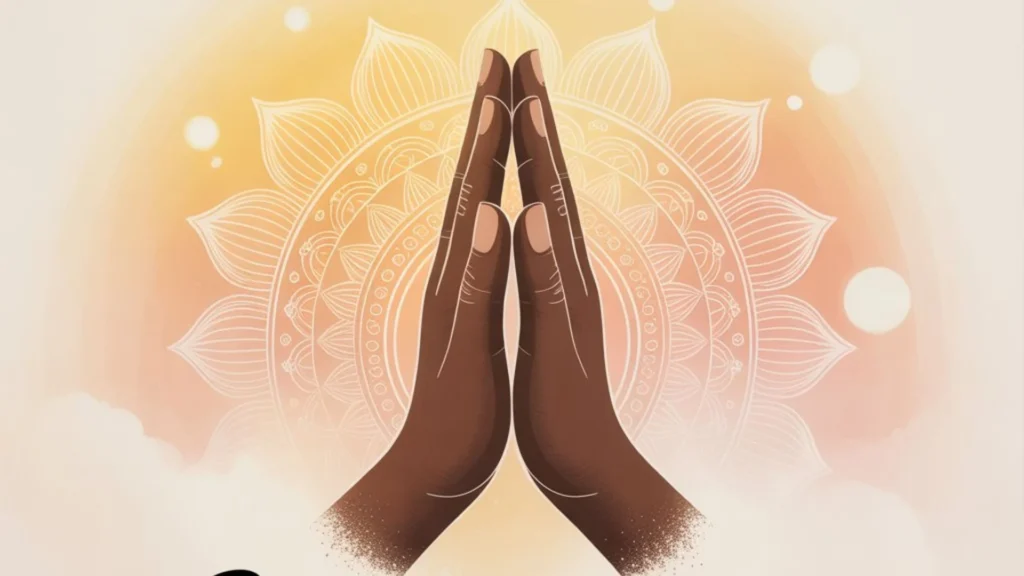
At its heart, Namaste is a spiritual practice. By saying Namaste, you acknowledge the light within yourself and others. This gesture represents:
- Respect, Reverence, and Honor toward others
- Recognition of the divine in every person
- Separation of the physical vs. spiritual body
Understanding the Deeper Meaning
The añjali mudrā, when paired with Namaste, is not merely a physical posture. It symbolizes:
- Obedience / Submission – Not in a weak sense, but as humility before the divine.
- Unity / Togetherness – Folding hands brings left and right together, representing balance and harmony.
- Inner Calm / Peace – Focused attention on the heart chakra fosters mindfulness and spirituality.
Philosophical interpretations include the idea that by acknowledging the sacred being in another, you enhance your own awareness and life improvement.
Namaste in Yoga and Meditation
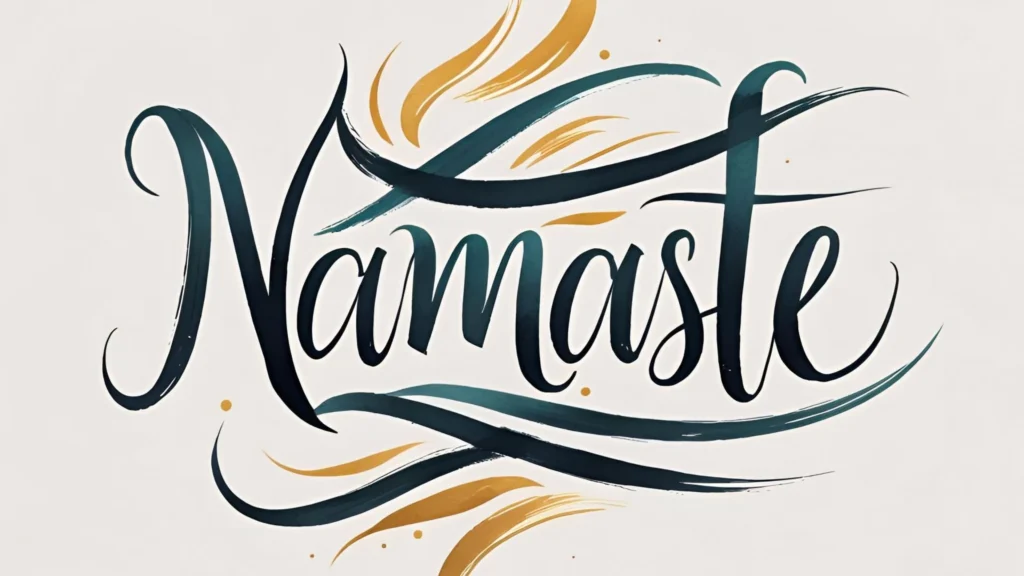
In modern yoga and meditation, Namaste is more than a greeting—it is a bridge between body, mind, and spirit.
Yoga teachers and students often begin and end sessions with Namaste, reinforcing connection and mindfulness.
Mudra and Heart Chakra
- Hands pressed at heart level symbolize the heart chakra, associated with love, compassion, and empathy.
- The gesture promotes inner peace, balance, and positive energy flow.
- It serves as a meditation gesture / prayer position, enhancing focus during yoga practice.
Benefits in Yoga Practice
- Fosters a respectful environment in classes
- Encourages students to recognize the divine in others
- Supports mental clarity, inner calm, and emotional stability
By performing Namaste mindfully, you are not only greeting others but also acknowledging the divine within yourself.
Proper Usage and Pronunciation
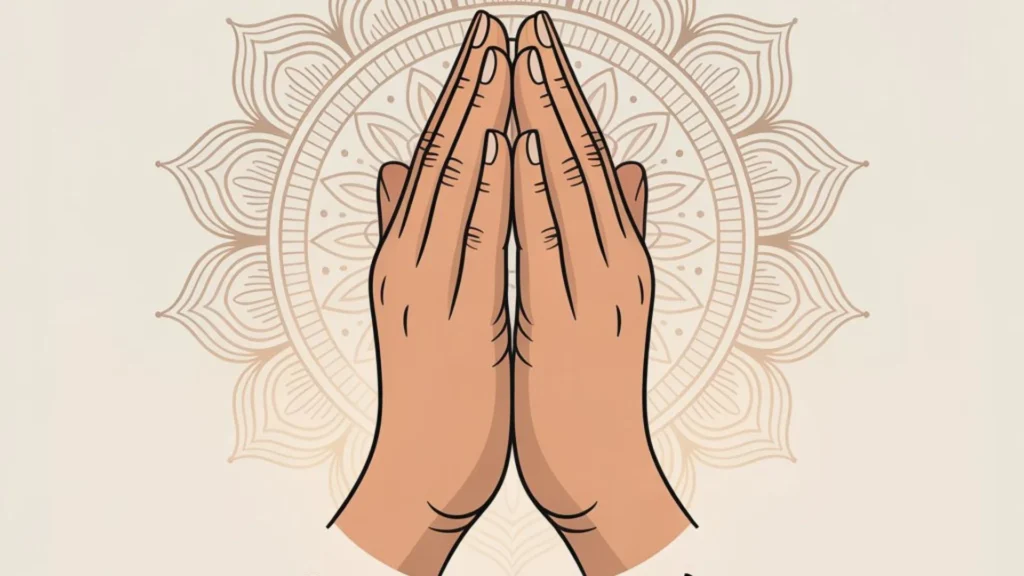
Pronouncing Namaste correctly adds to its authenticity:
- Namaste: nah-mah-stay
- Namaskar: nah-mah-skar
- Namaskara: nah-mah-ska-rah
How to Perform Namaste Correctly
- Bring your palms together at chest level.
- Keep your fingers pointing upwards and hands slightly angled.
- Slightly bow your head.
- Maintain eye contact and sincerity.
Common Mistakes
- Raising hands too high or low
- Not bowing slightly
- Using the gesture without mindful awareness
By following proper technique, you honor the spirituality and cultural significance behind the gesture.
Namaste as a Universal Gesture
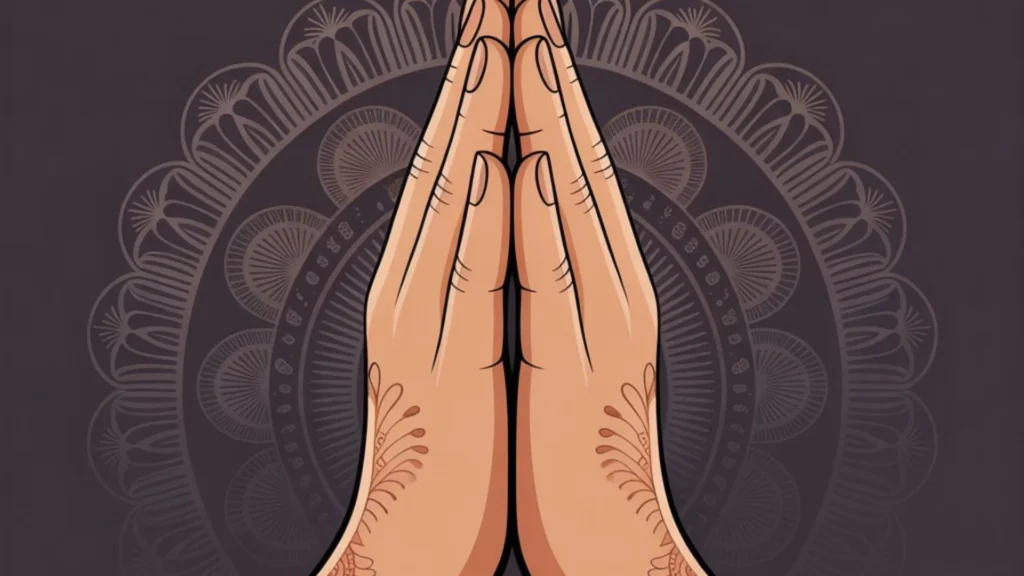
Namaste has transcended its Indian roots to become a global symbol of respect and spirituality. It is widely used in:
- Yoga studios worldwide
- Meditation retreats in Asia and Europe
- Wellness communities emphasizing mindfulness
- Diplomatic and cultural events as a gesture of peace
Countries like Thailand have integrated Namaste-like gestures in temples, while Western countries recognize it as a mindful greeting that conveys gratitude, unity, and positivity.
Practical Benefits of Using Namaste
Incorporating Namaste into daily life can improve both personal and social well-being.
Benefits Table
| Benefit | Explanation | Example |
| Respect and Reverence | Shows humility and honor | Greeting elders or teachers |
| Inner Calm & Mindfulness | Fosters meditation and peace | Starting a stressful day with Namaste |
| Strengthens Relationships | Recognizing others’ divine essence | Enhances empathy and social harmony |
| Spiritual Growth | Encourages reflection on selflessness | Using phrases like “Not mine” (Na + Ma) |
| Gratitude & Positivity | Promotes thankfulness and contentment | Saying thank you or welcome with genuine heart |
Namaste is more than etiquette—it is a practice that nurtures spirituality, mindfulness, and life improvement.
Related Terms and Concepts

To understand Namaste fully, it helps to know related concepts:
- Bow / Reverential Salutation / Adoration – Physical signs of respect
- Te (“to you”) & Kaara (“doing”) – Sanskrit components of Namaste
- Homage / Worship – Spiritual acknowledgment
- Meditation Gesture / Prayer Position – Aligns body and mind
- Recognizing the Divine in Others – Core philosophical principle
- Sincerity / Eye Contact – Key to authentic greeting
- Unity / Togetherness – Enhances social harmony and peace
- Life Improvement / Inner Calm – Personal benefits of practice
- Gratitude / Thank You / Welcome / Respect Elders – Everyday usage
These terms deepen our appreciation of Namaste as both a physical action and spiritual practice.
Conclusion
Namaste is more than a greeting—it is a bridge between humans and divinity, a gesture of respect, and a tool for spiritual and emotional growth.
By incorporating Namaste into your daily life, yoga practice, or meditation routine, you acknowledge the light within yourself and others, promoting unity, peace, and mindfulness.
Next time you say Namaste, remember: it’s not just “hello.” It is a profound recognition of the sacred being within every person, a practice that transforms ordinary interactions into acts of spiritual significance and reverence.


